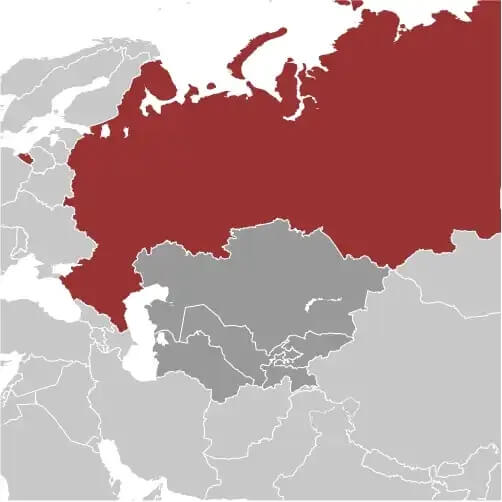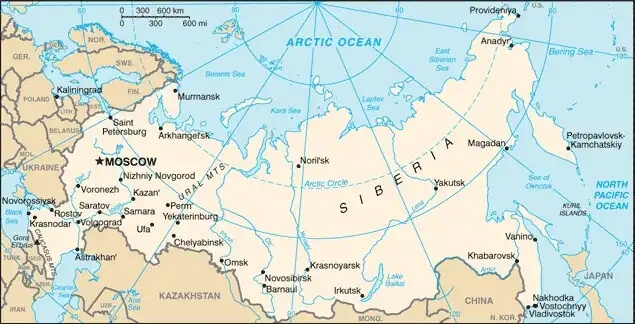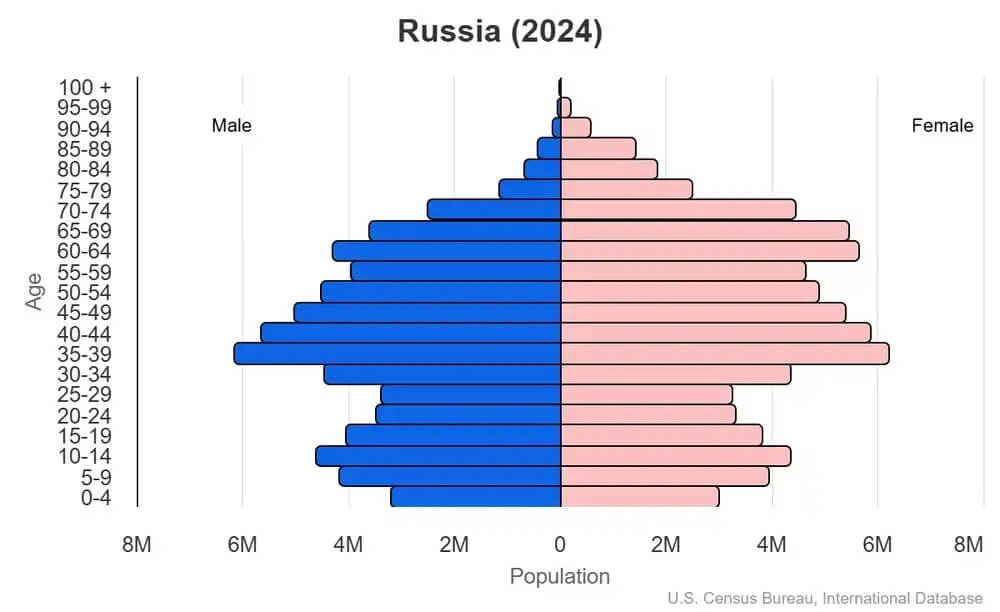World Book
Russia
World Book Index
70


With a score of 70, the country is ranked 59th out of 158 countries in the World Book ranking. (more information)
Introduction
Background
Under PETER I (1682-1725), the Principality of Muscovy expanded and became the Russian Empire. The Romanov dynasty was overthrown in 1917, ushering in communism and the formation of the Union of Soviet Socialist Republics (USSR). The USSR collapsed in 1991, and after a period of political and economic turmoil, Russia shifted toward a centralized, authoritarian state under President Vladimir PUTIN (2000-2008, 2012-present).
Geography
Area
total : 17,098,242 sq km
land: 16,377,742 sq km
water: 720,500 sq km
Climate
ranges from steppes in the south through humid continental in much of European Russia; subarctic in Siberia to tundra climate in the polar north; winters vary from cool along Black Sea coast to frigid in Siberia; summers vary from warm in the steppes to cool along Arctic coast
Natural resources
wide natural-resource base including major deposits of oil, natural gas, coal, and many strategic minerals, bauxite, reserves of rare earth elements, timber
People and Society
Population
total: 140,820,810 (2024 est.)
Ethnic groups
Russian 77.7%, Tatar 3.7%, Ukrainian 1.4%, Bashkir 1.1%, Chuvash 1%, Chechen 1%, other 10.2%, unspecified 3.9% (2010 est.)
Languages
Russian (official) 85.7%, Tatar 3.2%, Chechen 1%, other 10.1% (2010 est.)
Religions
Russian Orthodox 15-20%, Muslim 10-15%, other Christian 2% (2006 est.)
Population growth rate
-0.49% (2024 est.)
Government
Government type
semi-presidential federation
Capital
name: Moscow
Executive branch
chief of state: President Vladimir Vladimirovich PUTIN (since 7 May 2012)
head of government: Premier Mikhail Vladimirovich MISHUSTIN (since 16 January 2020)
Diplomatic representation in the US
chief of mission: Ambassador Alexander Nikitich DARCHIEV (since 11 June 2025)
Diplomatic representation from the US
chief of mission: Ambassador (vacant); Chargé d’Affaires J. Douglas DYKHOUSE (since June 2025)
Economy
Economic overview
natural resource-rich Eurasian economy; leading energy exporter to Europe and Asia; decreased oil export reliance; endemic corruption, Ukrainian invasion, and lack of green infrastructure limit investment and have led to sanctions
Real GDP (purchasing power parity)
$6.089 trillion (2024 est.)
$5.835 trillion (2023 est.)
$5.607 trillion (2022 est.)
Real GDP per capita
$41,700 (2024 est.)
$39,900 (2023 est.)
$38,200 (2022 est.)
Exports
$475.277 billion (2024 est.)
$465.22 billion (2023 est.)
$640.878 billion (2022 est.)
Exports - partners
China 33%, India 17%, Turkey 8%, Kazakhstan 4%, Brazil 3% (2023)
Exports - commodities
crude petroleum, refined petroleum, natural gas, coal, fertilizers (2023)
Imports
$381.45 billion (2024 est.)
$379.659 billion (2023 est.)
$347.384 billion (2022 est.)
Imports - partners
China 53%, Turkey 5%, Germany 5%, Kazakhstan 5%, Italy 2% (2023)
Imports - commodities
cars, packaged medicine, broadcasting equipment, garments, plastic products (2023)
Human Development Index
The country's Human Development Index (HDI) is 0.832, ranking it 64th out of 193 countries tested. (more information)
World Happiness Report
The World Happiness Report ranked the country 71st out of 158 countries tested with a score of 5.842. (more information)



